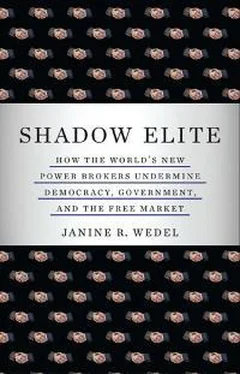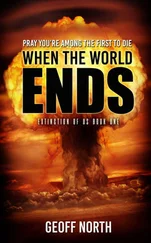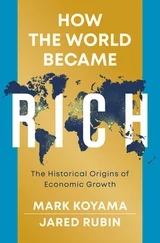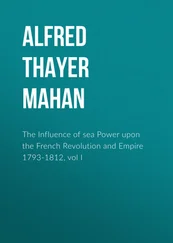9. As Gary Dorrien writes, “Kristol broke from liberalism in the 1950s; Podhoretz turned Right at the end of the 1960s; the right-wing social democrats became neoconservatives in the early 1970s.” Gary Dorrien, The Neoconservative Mind: Politics, Culture and the War of Ideology (Philadelphia, PA: Temple University Press, 1993), p. 15. See also Irving Kristol, Neoconservatism: The Autobiography of an Idea , New York: Free Press, 1995. For neoconservatism as a force on the political scene, see, for instance, ibid., pp. 8–18. See also Jim Lobe, “What Is a Neoconservative Anyway?” Asia Times , August 3, 2003, http://ipsnews.net/news.asp?idnews=19618.
10. The Heilbrunn book is Jacob Heilbrunn, They Knew They Were Right: The Rise of the Neocons (New York: Doubleday, 2008), p. 68.
11. RAND was one of the government’s first major forays into contracting out expertise. It was set up in the late 1940s to conduct research for the U.S. armed forces and has been a powerful contributor to military and intelligence analysis ever since.
On Wohlstetter as inspiration for Perle and Wolfowitz, see, for example, ibid., pp. 98–99. According to Heilbrunn, Wohlstetter “even believed that protracted wars, rather than short ones, could be a good thing. Why? Because the West had superior economic resources and could outlast its foes . . . Wohlstetter focused on devising and promoting new weapons systems, ranging from missile defense to more accurate weaponry that would lower civilian casualties, in order to wage and win more wars. Some of his ideas came to grief in both Vietnam and Iraq. All of these themes, however, would be pounded home by the neoconservatives, culminating in the Bush Doctrine” (p. 106).
Andrew Marshall, an octogenarian and still director of the Pentagon’s Office of Net Assessments, has also long provided substantial intellectual justification for rethinking military affairs along neoconservative lines.
12. PBS, “Richard Perle: The Making of a Neoconservative,” Think Tank with Ben Wattenberg , 2003, http://www.pbs.org/thinktank/transcript1017.html.
13. For Wohlstetter’s influence on Jackson, see, for example, Heilbrunn, They Knew They Were Right , p. 106. For Jackson’s, strong-on-defense stance, see, for example, Elizabeth Drew, “The Neocons in Power,” New York Review of Books 50, no. 10 (June 12, 2003). With regard to Gaffney’s working for Jackson, see Frank Gaffney’s biography, Center for Security Policy, http://www.centerforsecuritypolicy.org/Home.aspx?Search=gaffney. For “Senator from Boeing” reference, see, for instance, Roger Morris, “P-I Focus: The Road the U.S. Traveled to Baghdad Was Paved by ‘Scoop’ Jackson,” Seattle PI , April 6, 2003, http://www.seattlepi.com/opinion/115505_focus06.shtml.
14. Jacob Heilbrunn calls Jackson “effectively the first prominent neoconservative politician” (Heilbrunn, They Knew They Were Right , p. 115). Neoconservatives, with Podhoretz a key player, conceived of the Coalition for Democratic Majority, which they announced in 1972 (ibid., p. 114). The neoconservatives supported Jackson’s presidential campaign and Jackson, leader of this coalition and the conservative faction of the Democratic Party, endorsed a strong military and pushed the idea of “peace through strength.”
15. Feith was appointed special counsel by Perle in 1982 and served until 1986 (Feith, War and Decision , pp. 36–37).
Frank Gaffney’s biography, Center for Security Policy, http://www.centerforsecuritypolicy.org/Home.aspx?Search=gaffney. For “Senator from Boeing” reference, see, for instance, Roger Morris, “P-I Focus: The Road the U.S. traveled to Baghdad was paved by ‘Scoop’ Jackson,” Seattle PI , April 6, 2003, http://www.seattlepi.com/opinion/115505_focus06.shtml.
Joining Perle, Feith, and Gaffney in the Department of Defense was Stephen Bryen. Bryen first served as deputy assistant secretary of defense for trade policy and later became the first director of the Defense Technology Security Administration (which was later absorbed into the Defense Threat Reduction Agency). He was in charge of regulating the transfer of U.S. military technology to foreign countries. Perle and Bryen met in the early 1970s when Perle worked for Senator Jackson and Bryen for Senator Clifford Case (R-NJ). Bryen, who began working for Case in 1971, became Case’s personal staff member responsible for foreign policy issues in 1973, and, beginning in 1975, a staff member on the Senate Foreign Relations Committee. See Michael P. Saba and Evan Hendricks, The Armageddon Network , pp. 67–68.
16. With regard to Perle and his age cohorts as part of the “second” or “younger” generation, see Sidney Blumenthal, The Rise of the Counter-Establishment: From Conservative Ideology to Political Power (New York: Times Books, 1986), pp. 160–165; and Heilbrunn, They Knew They Were Right , pp. 106–113.
The Meyrav Wurmser quote is from Comments of Meyrav Wurmser, “The War Party,” BBC Panorama , May 18, 2003, http://news.
bbc.co.uk/nol/shared/spl/hi/programmes/panorama/transcripts/thewarparty.txt.
An additional example is Neocon core ally Dov Zakheim, a member of the Advisory Council of Frank Gaffney’s Center for Security Policy (and undersecretary of defense and comptroller). He said in September 2002 about the Center and their efforts: “Basically this is family. We have been in the trenches together now well before Frank set up the Center for Security Policy. It’s an honor to be back with people that we know—in the Pentagon—are always with us.” Dov Zakheim, quoted in Center for Security Policy, Precision-Guided Ideas , 2002 Annual Report, Center for Security Policy, http://www.
centerforsecuritypolicy.org/modules/newsmanager/inside%20the%20ctr
%20images%20pdfs/annualreport2002.pdf (accessed 7/21/2008), p. 7.
17. Sources for Israeli embassy officials referring to the “Perle group” include W. Patrick Lang, author’s interview of June 12, 2009. Lang, a Defense Intelligence Officer for the Middle East, South Asia and Counter-Terrorism from 1985 to 1992 and Director of Defense HUMINT from 1992–1994, was awarded the Presidential Rank of Distinguished Executive.
With regard to Perle serving as a mentor, see, for example, Weisman, Prince of Darkness: Richard Perle , pp. 66–68.
The Feith quote is from ibid., p. 67.
18. A key question for an analyst trying to make sense of the parameters of the network is the extent to which individuals are intertwined with other individuals with whom they work to shape the habitat.
19. Some analysts characterize this as a “mindset” or a “worldview,” assessing it as not coherent enough to warrant the label ideology. See, for example, Heilbrunn, They Knew They Were Right , pp. 106–113.
20. Hannah Arendt, Origins of Totalitarianism (New York: Harcourt Brace & Company, 1951), p. 423. Arendt posits that absolute enemies were at the core of the world views of both Stalin and Hitler—for Stalin they were the West, for Hitler, the Jews.
21. Comments of Richard Perle, “The War Party,” BBC Panorama , May 18, 2003, http://news.bbc.co.uk/nol/shared/spl/hi/programmes/
panorama/transcripts/thewarparty.txt. Wolfowitz and Feith are among those members of the Neocon core whose parents (their fathers were Polish Jews) lost many family members in the Holocaust.
22. For history of the neoconservative movement and thought, see Alan M. Wald, The New York Intellectuals: The Rise and Decline of the Anti-Stalinist Left From the 1930s to the 1980s (Chapel Hill, NC: University of North Carolina Press, 1987); Gary Dorrien, The Neoconservative Mind: Politics, Culture and the War of Ideology (Philadelphia, PA: Temple University Press, 1993); Blumenthal, The Rise of the Counter-establishment , especially pp. 122–165; and James Mann, Rise of the Vulcans: The History of Bush’s War Cabinet (New York: Viking, 2004), especially pp. 21–36 and pp. 90–94. The quote from Jim Lobe is from “From Holocaust to Hyperpower,” Inter Press Service News Agency, January 26, 2005, http://ipsnews.net/print.asp?idnews=27188.
Читать дальше












